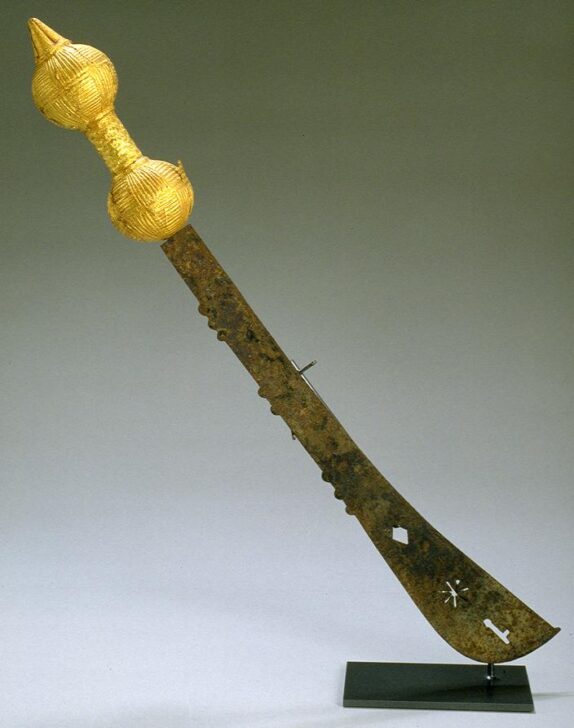Ceremonial sword (afena)
Asante

Description
Subject Matter:
Swords, called afena by the Asante, evolved from use as formidable weapons to ceremonial objects by the 18th and 19th century. Elaborate decoration and gold-leaf on afena were used to show the difference in standing among men at the ruler—the Asantehene—of the Asante's court. The origin of their shape may be islamic weapons from sahara trade. Afena were also used as communication tools, as officials sent to deliver messages or conduct negotiations were escorted by sword-bearers.
References Cited:
MacLeod, Malcolm D. 1981. The Asante. London: British Museum Publications Ltd.
Physical Description:
This sword has an iron blade that is narrow toward the handle and gradually widens at the top, ending in a slight curve. Along the edge of the blade are small, half-circular knobs and near the top of the blade there are geometric cut-outs. The handle is formed by two spheres connected by a bar. At the bottom of the handle is a conical projection. The handle is covered in gold-leaf.
Usage Rights:
If you are interested in using an image for a publication, please visit https://umma.umich.edu/request-image/ for more information and to fill out the online Image Rights and Reproductions Request Form.